Your cart is currently empty!
On the Importance of Gardening Exercises
I would encourage you to start preparing yourself physically for the gardening season, to consider the importance of gardening exercises.
Your cart is currently empty!
Snake Plants are available in various shapes, colors, and sizes, so you are sure to find one that’s right for you. The following are a few Sansevieria varieties every Snake Plant lover should know about. You might want more information on the adaptability of sansevieria houseplant.
There are many cultivars of Sansevieria trifasciata, one of the most common types of snake plants. Some plants have deep green leaves, and others have variegated or curly leaves. The leaves are generally three inches wide and three feet tall at maturity. In addition to being a popular choice for landscaping and indoor décor, this plant is native to West Africa.
Beginners and experienced gardeners alike can enjoy Sansevieria trifasciata, which requires little maintenance to grow. Although it requires moderately bright light, it is capable of surviving in low-light conditions. Root rot can occur if too much moisture is present in the soil. It prefers well-draining soil.
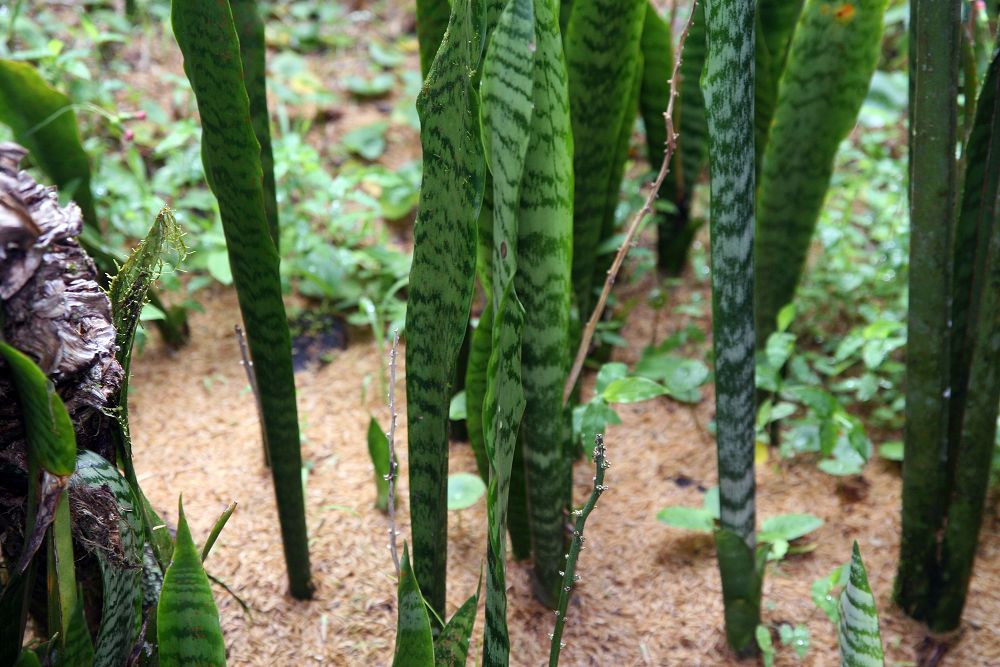
Snake Plants are native to central Africa, sometimes called Whale’s Fin or Shark’s Fin. A broad, mottled green leaf can reach a length of four feet.
It is also possible for the paddle-shaped leaves to be variegated, depending on the cultivar. Purple-banded sheaths, often above the soil line, make this plant easy to identify. Bright light is ideal for Sansevieria masoniana. If it doesn’t receive enough sunlight, this plant will not bloom.
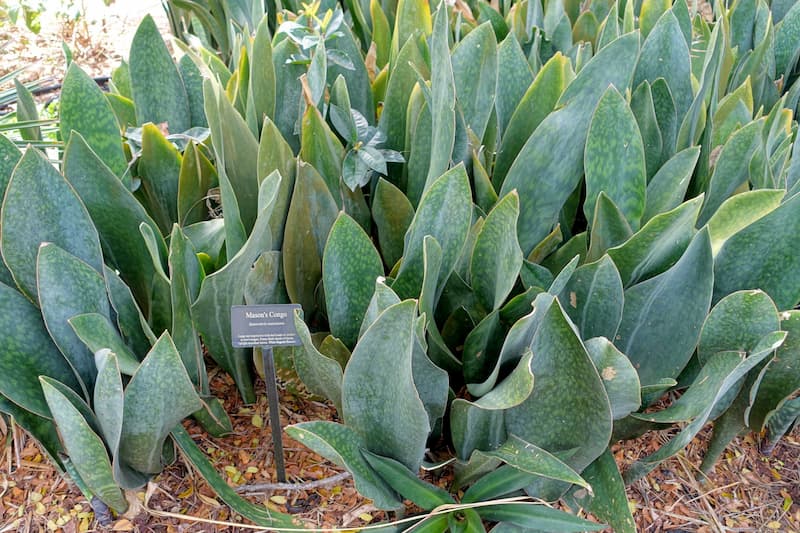
With most varieties of Sansevieria, the green and white bands are long and pointed. Clusters of greenish-white flowers typically appear in the late fall.
In order to grow Sansevieria gracilis, it is best to expose it to bright filtered light or partial sun. Shade or low lighting conditions can be suitable for this plant, but the colors will not be as vibrant as they would be when exposed to more sunlight. Similar to the majority of Sansevieria varieties, it can be propagated through leaf cuttings and offsets.
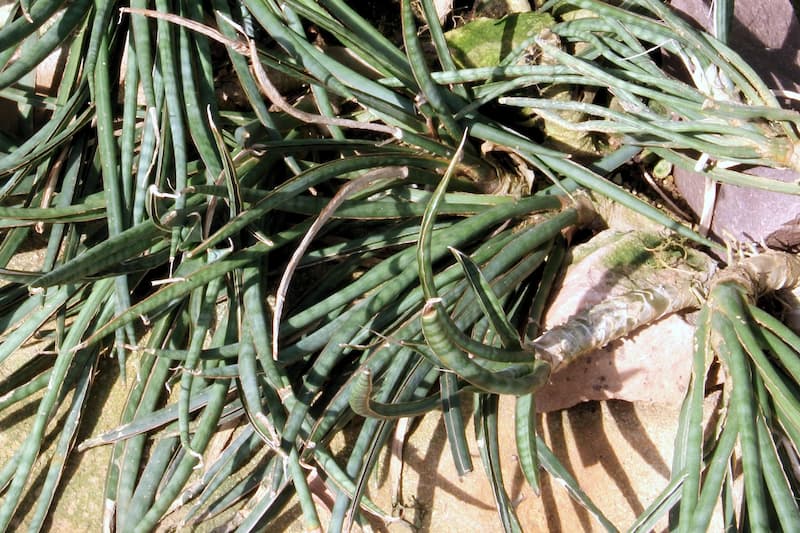
Sanseveria canaliculata produces cylindrical leaves with a maximum length of three feet and a diameter of one inch at maturity. It is either a single leaf or two leaves growing at the same time. It blooms in the spring in Madagascar and is native to the island. Flowers have a tubular shape and are greenish-white in color.
Irregular watering helps Sansevieria canaliculate stay in its best shape. It prefers well-draining soil and filtered bright light. You must protect this plant from frost when the outside temperature falls below 50 degrees Fahrenheit.

Native to eastern Africa, this chunky Sansevieria grows in rosette-shaped rosettes with short, cylindrical leaves. It can reach a height of three feet and a diameter of about two inches. A cluster of the grayish-white flower appears when the plant blooms. The leaves are usually dark with light green bands.
Unlike other Sansevieria varieties, Sanseveria patens thrive in moderately bright light. However, it can tolerate a wide range of light levels, depending on the light level it receives. This plant doesn’t survive freezing temperatures, so you must protect it or bring it inside during cold weather. It requires infrequent but deep watering.
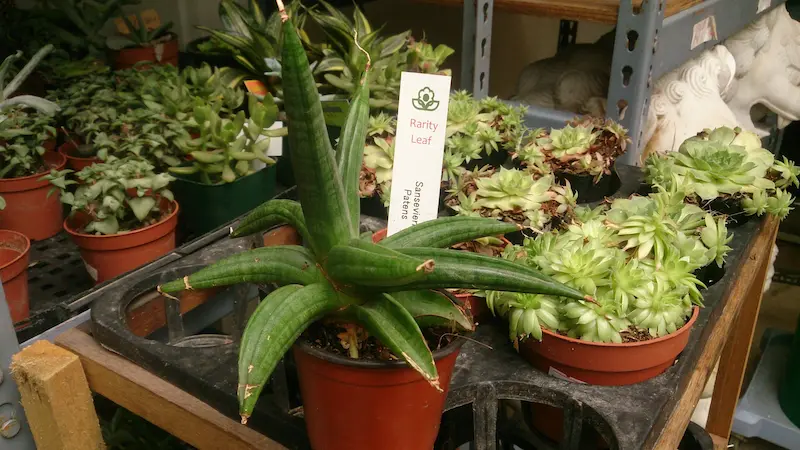
There is no other type of Snake Plant quite like this cylindrical variety, sometimes called the ‘African Spear.’ It is larger than most other Sansevieria varieties, with rounded leaves rising up to six feet high.
Braiding the leaves while they are young, securing them at the top, is a common practice. As a result, growth is controlled, and a pleasing arrangement is created. If you live in a warm climate, Sansevieria cylindrica is an excellent landscaping plant. Providing succulents with well-draining soil is important, and You should water them infrequently. The plant is mildly toxic, so keep children and pets away from it if you plant it near them.

When mature, Sansevieria fischeri measures less than 16 inches in height, making it one of the smaller varieties of Snake Plant.
In the summer, the plant produces tubular white flowers on its inflorescence. It is an excellent container plant as well as an outdoor one. Sunlight and drainage are essential for this variety of Snake Plant. When temperatures dip below freezing, bring the plant inside or protect it. It is not frost-tolerant.
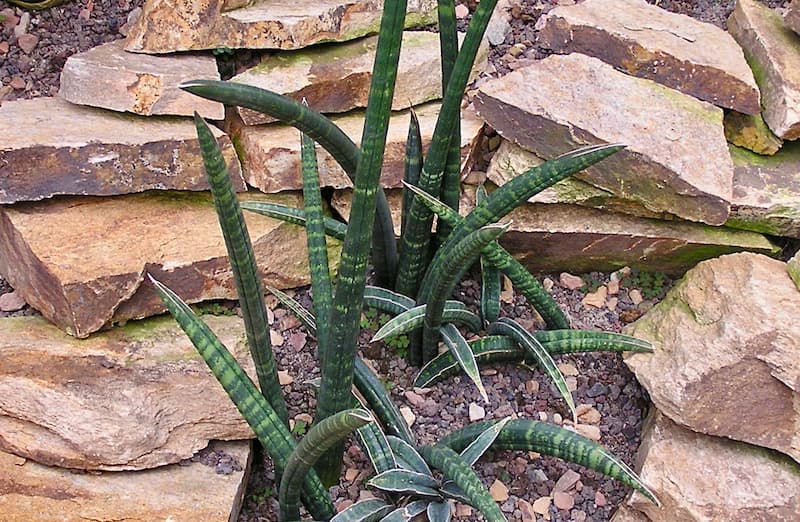
When mature, the Sansevieria can reach up to four feet tall and has deep green leaves with golden edges. These sword-shaped leaves grow vertically in tight clusters like those of other Sansevieria species. When this cultivar blooms, it produces greenish-white leaves in a slender inflorescence at the top.
The moderately bright light is best for Laurentii. Full sunlight may burn the leaves, but brighter lighting will produce more vibrantly colored leaves. It thrives best when watered infrequently, especially during the winter months. In order to avoid root rot, soil that drains well is essential.

I would encourage you to start preparing yourself physically for the gardening season, to consider the importance of gardening exercises.
Take the time to enjoy the slower side of gardening with native lupine seeds, over-wintered coleus and rediscovering the creativity and joy of listening to the birds chirping and the warmth bringing new life to our gardens.
Attract hummingbirds, birds, butterflies and bees with Canada Milk Vetch – a beautiful flower perfect for bouquets, heavy clay soils and winter flowerpots. Perfect for restoration gardens, erosion control and dry climates.
Choose 10 of the best bulbs to bring brilliant spring color to your garden! From fragrant Hyacinth to stately Allium, bring joy to early spring with Winter Aconite, Tulips, Crocus, Glory of the Snow and more. Plant before October to ensure stunning blooms.
Grey headed Coneflower has eye-catching yellow flowers that entice birds and pollinators. It is ideal for natural plantings and meadows.
One of my dear friends found a seed resource and seed sources on Facebook. I thought you might find it interesting.
GardeningCalendar.ca gets some funding from advertisers. If you click on links and advertisements at no cost to you, the site may receive a small commission that helps fund its operation.
© 2025 J&S Calendars Ltd.
Leave a Reply
You must be logged in to post a comment.